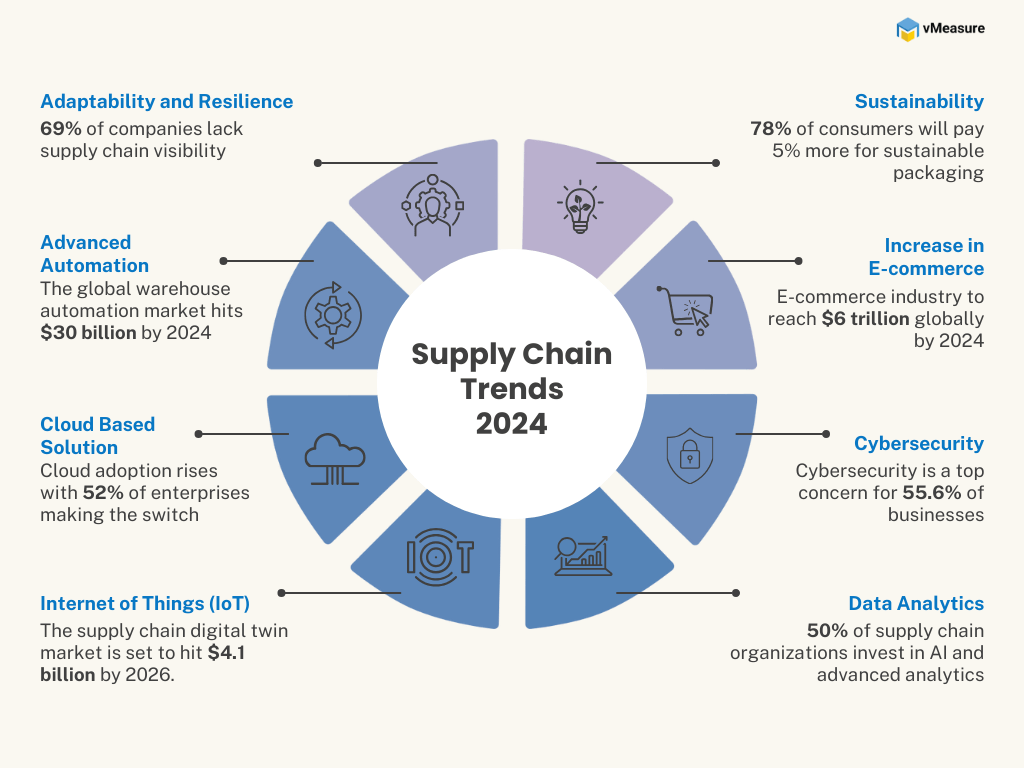
Supply Chain Trends For 2024
#1 Adaptability and Resilience
#2 Advanced Automation
The global market for warehouse automation is expected to reach $30 billion by 2024. Automation is no longer a futuristic dream; it’s the present reality. In 2024, Advanced Automation like dimensioning machines provide dimension weight data that extends its impact to warehouse layouts. Automated guided vehicles (AGVs) and robotic systems navigate through strategically optimized layouts, leveraging dimensional weight data to organize inventory with unparalleled accuracy.
#3 Cloud Based Solution
#4 Data Analytics
#5 Sustainability
Modern Consumer prioritizes sustainability pressing brands to adopt eco-friendly practices in their supply chain. 78% of consumers claimed they would pay 5% more for products in more sustainable packaging. Companies should embrace circular economy models, where waste becomes a resource, and renewable energy powers their operations. Oversized packages continue to be a major problem in supply chain management and increase the carbon footprint. Integrating dimensional weight data with the cartonization software within the WMS helps to compute the efficient packaging configuration. Conducting on thorough assessment of supplier sustainability including evaluation of carbon footprints contributes to building resilient and socially responsible supply chain networks.
#6 Increase in E-commerce
#7 Internet of Things (IoT)
#8 Cybersecurity
Cybersecurity for the supply chain should be a multifaceted and proactive approach. Businesses intensifying efforts to safeguard their digital ecosystems. The adoption of Zero Trust Architecture will gain prominence in 2024, as companies recognize the need to eliminate assumptions about the security of internal networks. The integration of blockchain technology becomes a strategic move to enhance security to track goods and establish transparent and trustworthy supply chain processes.